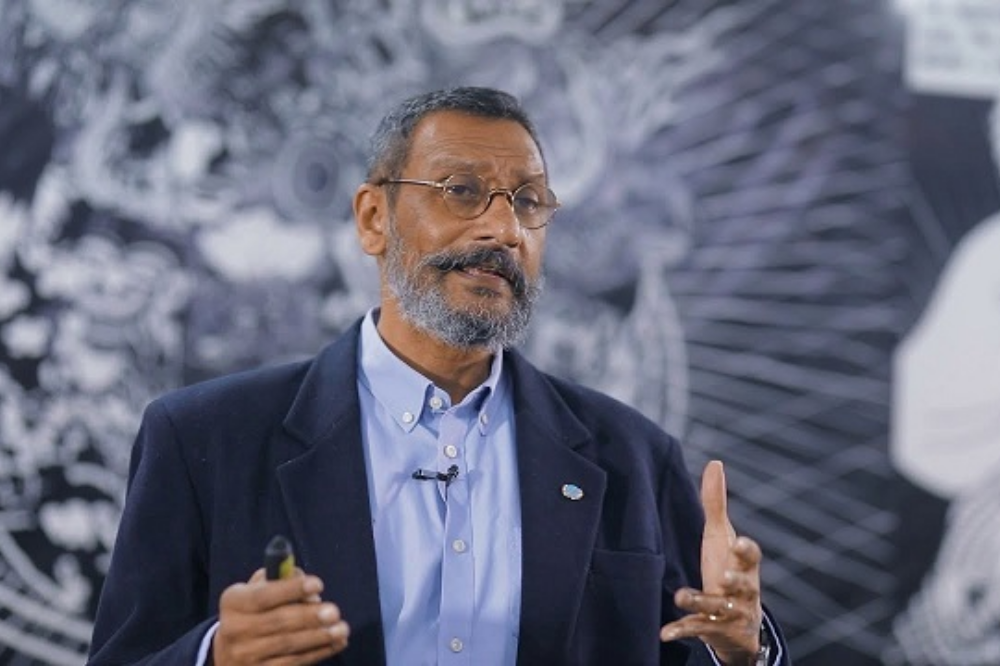
In schools around the world, teachers are using Social-Emotional Learning (SEL) to equip children with vital life skills such as managing emotions, achieving goals, displaying empathy, building relationships, and making responsible decisions.
This holistic approach not only prepares students to excel academically but also equips them with essential life skills in the face of many complex challenges they will face when they leave school.
One expert who understands the value of this approach well is Dr Anantha Duraiappah, the Director of the UNESCO Mahatma Gandhi Institute of Education for Peace and Sustainable Development (MGIEP).
Since June 2014, he has been responsible for developing the Empathy, Mindfulness, Compassion, Critical inquiry (EMC2) model – the Institute’s novel approach on SEL, and has positioned the Institute as a forerunner in the development of cutting-edge learning and teaching modules on SEL for students from K-12 to University.
“As our world continues to rapidly evolve, the traditional approach to education is no longer sufficient to prepare students for the challenges and opportunities of the 21st century,” Dr Duraiappah told The Educator.
“Instead, taking a SEL approach can help students succeed in not only a school setting but work and life too.”
Dr Duraiappah said that for SEL to become successful, the pedagogy needs to be markedly different to that of the traditional teaching approach.
“For example, SEL should not be taught as an academic subject in school, it must be practiced and experienced; both within and outside the classroom – meaning the learning continuum must include the home, the immediate community, and communities afar and different,” he said.
“To do so, a link must be created between classroom instructions and real-life experiences but depending on the social, economic, and ecological context the links between both may differ.”
Dr Duraiappah says despite this, the Social and Emotional Competencies (SECs) – attention regulation, emotion recognition, emotion regulation, empathy and compassion – remain the same which provides the possibility to interact and engage with people from diverse backgrounds and cultures.
How students can apply their SEL skills in real-world situations
Dr Duraiappah said the reason why real-world situations are considered one of the best pedagogical tools for SEL is that these tend to be experienced by many people.
“For example, climate change is one of the biggest challenges faced by all living species. To address something as impactful as climate change, people across the world will need to act and change - building empathy towards those climate change effects is one way that leads to change,” he said.
“Having a deeper understanding of real-world situations urges people to adapt their ways through acts of compassion and kindness, and SECs. And, as a result, personal responsibility, promoting collaboration and building resilience are key practical ways to build SECs.”
Dr Duraiappah said participation in community service and volunteer work can provide some important opportunities for students and help them apply their SEL skills in real-world situations.
“Typically, traditional learning takes place in a formal classroom setting which can be deemed as pressurised. For SEL to be successful, this approach needs to take place in a setting that enhances its effectiveness – an informal setting outside the classroom,” he said.
“For example, community service projects or school extracurricular activities are known to provide more relaxed and less pressurised settings than in formal classrooms. Therefore, the effectiveness of these will be even more profound if the learning assessments are based on these projects and activities versus the traditional time-constrained formal setting of exams.”
Consequently, says Dr Duraiappah, SEL ingrained in activities outside the classroom ensure lifelong learning for success in both personal and professional settings.
“SEL must not be approached just as a classroom subject to be studied, examined, and forgotten - it should be built through a combination of academics and practice using real-life situations and challenges,” he said.
“The overall end goal of this learning approach is to make being empathetic, compassionate, and emotionally resilient a trait and not just competency; a constitutive part of oneself and not just acquired competencies for instrumental reasons.”


